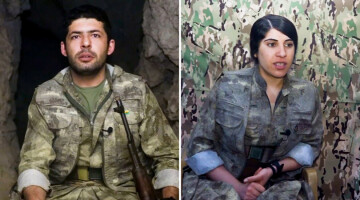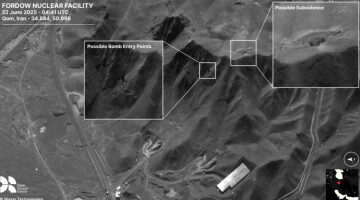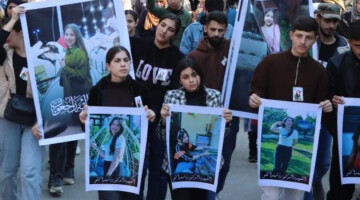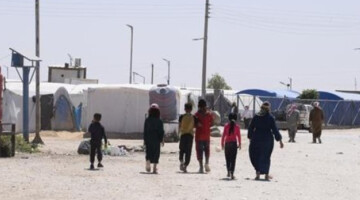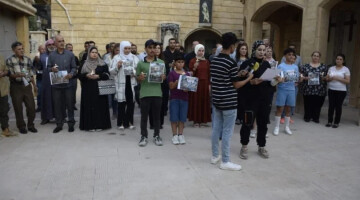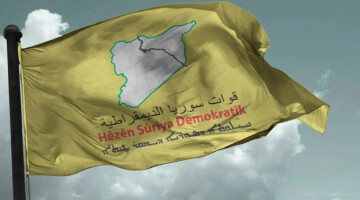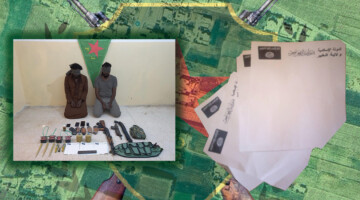Over the past two months, attacks by the invading Turkish forces on Ain Issa have continued to increase. Russia and Damascus not only watched but tried to put pressure on the Syrian Democratic Forces (SDF). Despite everything, the resistance continues.
On November 23, 2020 began the ground attacks by the Turkish army and its mercenaries from the so-called Syrian National Army (SNA) on the self-governing northern Syrian county of Ain Issa, in addition to artillery attacks.
Turkey breaks agreement with Russia and attacks
From the very beginning, the ceasefire negotiated for the region between Turkey and Russia was not worth the paper it was written on. This is because Turkey was not ready to stop its expansion and attacks, and Russia was not ready to fulfill its responsibility as the guarantor of the agreement. Thus, contrary to the ceasefire agreement guaranteed by Russia, the Turkish state established bases along the strategically important M4 highway. According to the ceasefire agreement signed by Russia and Turkey, Turkish troops were not allowed to establish positions in the area three kilometers north of the highway. However, Turkish bases are located precisely within this zone. For example, Turkey has established a base near the village of Muelek in western Ain Issa, about 800 meters from the highway. Another base was built 500 meters from the village of Seyda, which is two kilometers west of the center of Ain Issa. A third observation point was built near the villages of Mişerfa (Mushairefah) and Cehbel (Jabal) north of Ain Issa on the highway. Another post is being built near the village of Xalîdiyê west of Ain Issa, seven kilometers from the city. The establishment of two more so-called "observation posts" is also in preparation near the villages of Mişerfa and Cehbel. These "observation posts" are Turkish bases from which the invading forces bombard Ain Issa with artillery shells.
Attacks and resistance
Since November 23, there have been fierce ground attacks on the district and surrounding settlements. According to the SDF, the Ain Issa region, including the city center, has been the target of artillery attacks 162 times since then. Hundreds of civilian buildings have been damaged in the mentioned process. The gas station on the M4 highway in western Ain Issa was completely destroyed by an attack. A water tanker truck used to supply the population was also destroyed. A rest and gas station on the M4 highway near Ain Issa was razed to the ground.
Five civilians and eight fighters martyred
Five civilians were killed and 16 injured in the attacks. Eight SDF fighters were killed and nine were injured as a result of the attacks.
65 of the attackers have been killed and 15 wounded since the attacks began. Five Turkish army armored vehicles were destroyed while attempting to infiltrate the villages of Muelek, Mişerfa and Cehbel.
Due to the invading forces' attacks, five Syrian soldiers were injured. However, there were no reactions from the regime or its protecting power Russia.
Background of the attacks
Ain Issa is in a position of strategic importance due to its strategic location on the M4 highway and the crossroads to Raqqa and Manbij. Capturing Ain Issa would massively complicate the Cizire region's communication with Kobanê. The M4 highway is particularly targeted by Turkey. It connects Aleppo, Hesekê, Qamişlo and Til Koçer and thus extends to the Iraqi border.
Encircling the villages for the siege of the city
The village of Muelek is located west of Ain Issa, 1.2 kilometers from the M4 highway. The village of Seyda is located on a hill near Ain Issa. Due to its location, the village is an important strategic point to control Ain Issa militarily. The villages of Mişerfa and Cehbel are located on the M4 road to Til Temir, east of Ain Issa. When these villages are surrounded, the main routes to Ain Issa will be closed. Therefore, the attacks of the Turkish army and the occupation forces are particularly directed against these villages. So far, the invading forces have not succeeded in cutting off Ain Issa from the outside world due to the fierce resistance of the SDF.
SDF and population hold their ground
Russia's lack of response shows that the attacks are being carried out as a result of collusion with the Turkish state. Emine Omar, co-chair of the Syrian Democratic Council (MSD), had stated that "Russia is putting pressure on the SDF to hand over the city to the regime in Damascus." Thus, Turkey is to be used by Russia as a lever to eliminate autonomous administration. Massive protests erupted among the population of northern Syria due to Russia's duplicitous policies. Long vigils were held in front of the Russian base in Ain Issa, and large demonstrations against Russia's stance also occurred repeatedly in cities such as Manbij, Kobanê, Raqqa, and Tabqa. Anger grew and people started throwing stones at the Russian base in protest. Despite the massive attacks, many people in Ain Issa are determined not to leave their city and to continue the resistance.
Meanwhile, the SDF’s resistance has so far repelled every attack by the Turkish state and its mercenary forces. Russia had repeatedly tried to build up pressure on the SDF not to return the Turkish attacks. The fact that the attacks were nevertheless successfully repelled represents a clear setback for Russia's and Turkey's plans. Russia's ignorance of the Turkish attacks from the "observation points" in the west and east of the city shows that Russia, Damascus and Ankara are nevertheless trying to stick to this concept.




